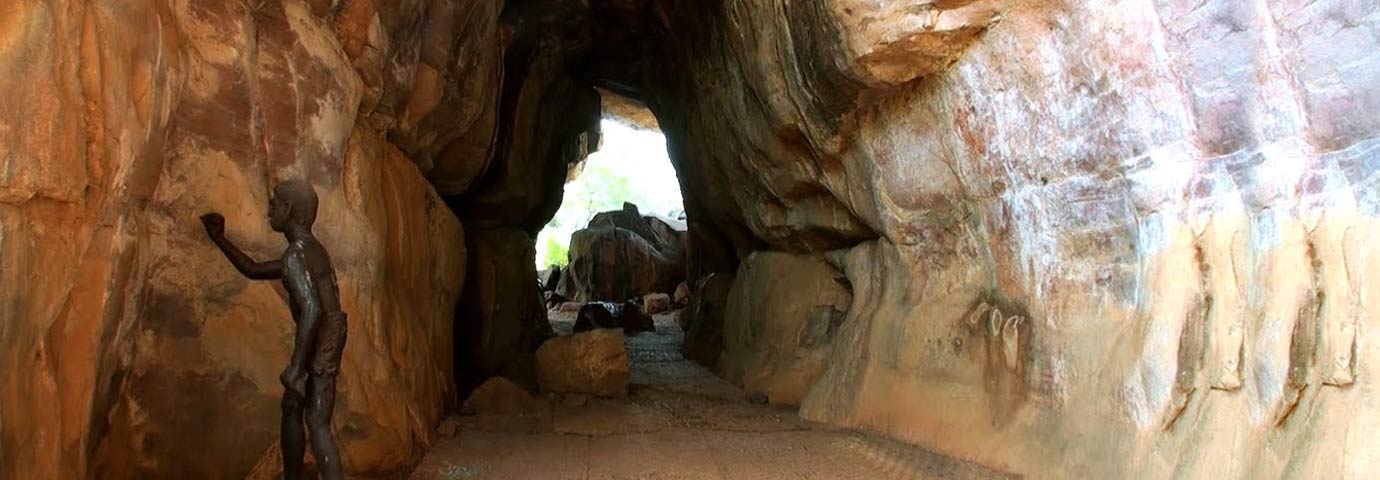Fast Facts
The Rock Shelters of Bhimbetka in Madhya Pradesh is an UNESCO World Heritage Site since 2003. Located in the foothills of the Vindhyan Range, these rock shelters date around 10,000 years old. Archaeologists believe the site to be one of the oldest rock shelters in the world. There are paintings broadly classified under periods of Upper Paleolithic, Mesolithic, Chalcolithic, Early Historic and medieval. Every era represented through the various cave paintings and period had its own unique artistic and decorative style. This intriguing site has millennia of history. Fortunately the paintings have been well preserved because of the dense foliage surrounding the caves. As the art covers the inner walls they were prevented from exposure to sunlight and extreme weather conditions that could have destroyed them.
History
Rock Shelters of Bhimbetka is one of the oldest pre-historic sites in India. The site dates almost to 10,000 years back. Around five ages have been represented through the mystical paintings. The name Bhimbetka itself means the 'resting place of Bhima' and is believed to have come home from Bhima, from the epic Mahabharata.
Archaeologists believe that the caves evolved over time into rock-shelters. These were ideal sites for aboriginal settlements. The location has abundant natural resources like perennial water supplies, natural shelter, rich forest flora and fauna. The environs are favorable to the development of sustainable pre-historic societies and creation of notable rock art. The smooth rocks have led some scientists to believe that the area was once under water.
The site complex was discovered by V. S. Wakankar in 1957. Since then it has been the source of intrigue among historians, geologists and archeologists.
What to see
Rock Shelters of Bhimbetka in Madhya Pradesh are five clusters of natural rock shelters. Different times and themes of the paintings make it an intriguing place to visit. The paintings are broadly classified under different periods: The Upper Paleolithic, Mesolithic, Chalcolithic, and Early Historic and medieval, and each period had its own unique artistic and decorative style.
The paintings have been made mainly in white and red colors with the sporadic use of green and yellow. These colors were made with the combination of hematite, manganese, soft red stone and wooden coal with the occasional addition of animal fat and leaf extract to the mixture.
These paintings are evidence of the socio-cultural aspects of the earlier civilizations and ages. They depict scenes like hunting, dancing, horse riding, everyday activities, popular religious symbols and animals like bisons, tigers, elephants, lions and reptiles. Of particular interest are the Auditorium Rock Shelter, Zoo Rock and Boar Rock in Bhimbetka Cluster.
How to Reach
By Air: Nearest airport for Bhimbetka is in Bhopal city which is about 55 kms from site. Raja Bhoj Airport is well connected with some of the important access points of India. Cabs, state owned buses and taxis frequent on the route.
By Rail: Bhimbetka does not have its own railway station. The nearest station is Bhopal, at a distance of 37 kms. State owned buses, taxis and cabs commute to the rock shelters.
By Road: Decent roads connect Bhimbetka. There are well laid roads to the neighboring cities of Madhya Pradesh. The state and private buses ply frequent service to the visitors.


